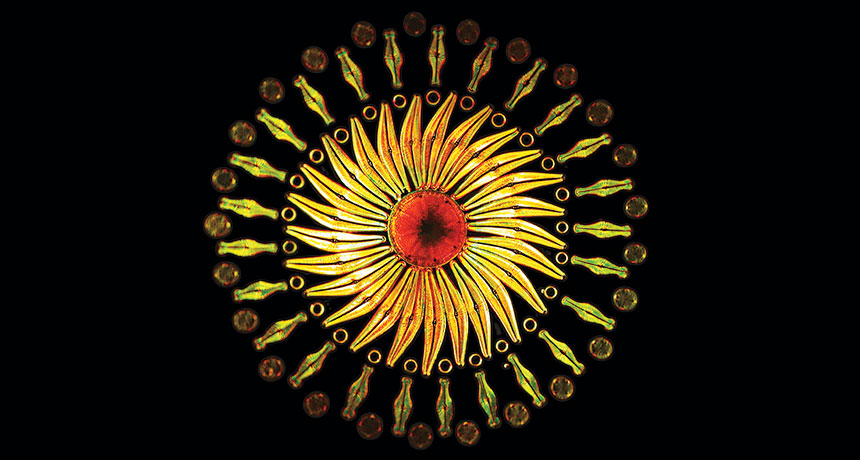Encased algae create kaleidoscope of color
Diatoms, which churn out oxygen in Earth’s oceans, are arranged into microscopic artwork

DIATOMIC ART This colorful pattern, which is hundreds of microns across, is made up of hard-shelled algae called diatoms.
Klaus Kemp






